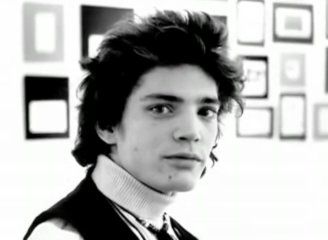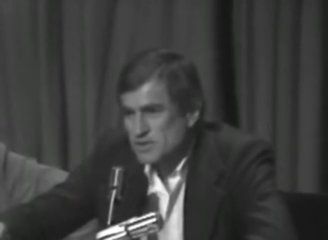They were going to do things the hard way, the tough way.


Whenever a film is made about two public figures, it can pretty much be taken for granted that one will pull focus away from the other. This is certainly the case with 2007's Black White + Gray: A Portrait of Sam Wagstaff and Robert Mapplethorpe, although surprisingly enough, Mapplethorpe is the one that winds up taking a back seat to the less well-known Wagstaff, who gets the lion's share of director James Crump's attention. A forward-thinking museum curator credited with being at the forefront of championing minimalism in the '60s, Wagstaff turned heads in the art world with his oft-controversial shows before switching gears and becoming a voracious collector of photographs. As a result, he was primed to fall in with Mapplethorpe, who was 25 years his junior (Wagstaff was 50 when they met in 1972) and whose blue-collar background contrasted sharply with his privileged upbringing.
Fueled by heavy drug use and a shared interest in BDSM and New York's leather scene, the bond between the two men held firm for the next decade and a half (Wagstaff was Mapplethorpe's patron as well as his lover, even going so far as to buy him a loft) until Wagstaff's untimely death in early 1987, at which point he left virtually everything to Mapplethorpe. He, in turn, died just two years later, not long after selling off the American silver Wagstaff amassed after he sold his massive photography collection to the J. Paul Getty Museum in 1984 to the tune of $5 million. That made it possible for the Robert Mapplethorpe Foundation to be set up, which is why the confrontational photographer continues to have a reasonably high profile today. It also says something about how our culture allows important artists to remain in the public eye while their benefactors fade from view.
To tell their shared story, Crump relies on archival footage of Wagstaff (including an appearance on The Dick Cavett Show) and Mapplethorpe, augmented by contemporary interviews with Patti Smith (who was Mapplethorpe's girlfriend before he realized he was gay), author Dominick Dunne, and a whole bevy of gallery owners, curators, art dealers, collectors, historians, and photographers. He also shows plenty of the historical photographs Wagstaff collected and lingers over the erotic photography Mapplethorpe took. In a way, it feels like an entire documentary could have been made just about the latter, especially in regards to the controversy surrounding Mapplethorpe's 1988 exhibition "The Perfect Moment," which attracted the attention of social conservatives that didn't like that it was partially funded by the National Endowment for the Arts. Then again, that only goes to show there's more that can be told.